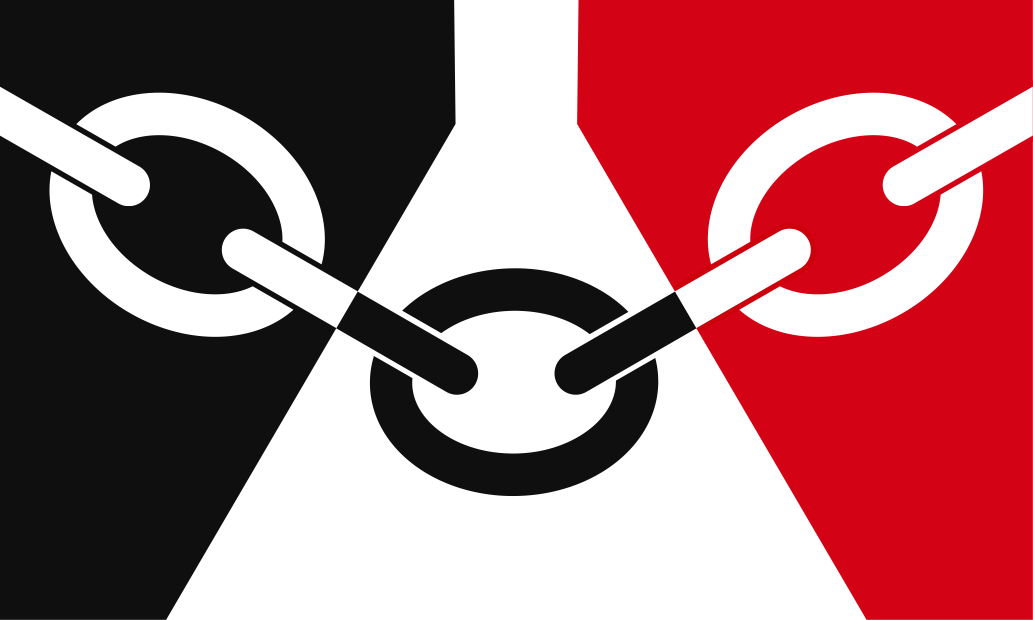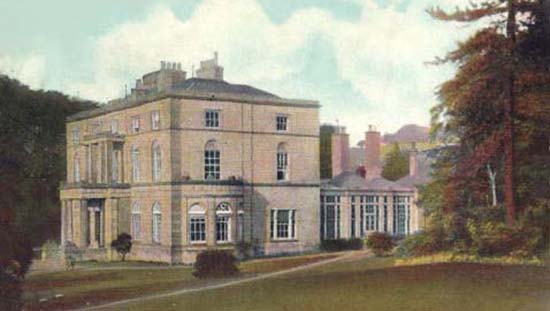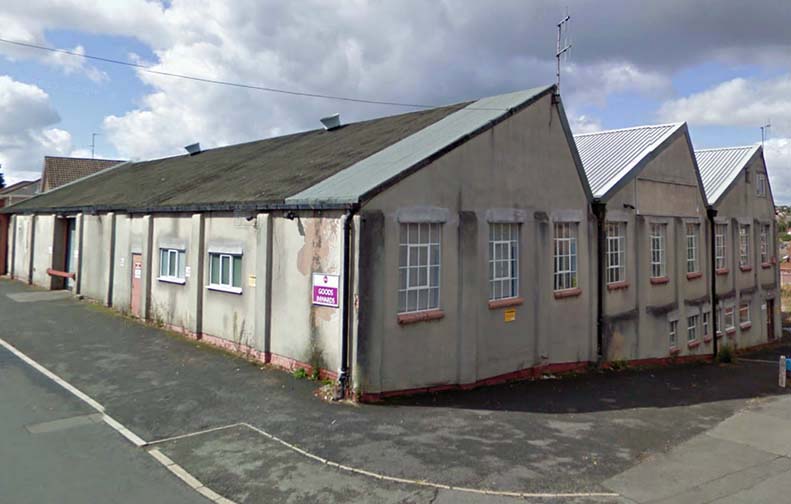
|

|
|||
|
Landmarks ~
Churches ~
Pubs ~
Shops ~
Amenities ~
Dwellings ~
Events ~
Schools ~
Sports
Industrial ~ Transport ~ Folklore ~ Families
~ Gallery - Industrial ~
Gas Works
In October 1860, discussions with the Dudley Gas Works Company to extend gas supplies to Lower Gornal,
proved unsuccessful due to it being at a lower level.
The local committee decided to start their own project to supply the village.
A gas works was established at Musk Lane, Lower Gornal about 1864, coal gas at that time was normally produced locally and principally to supply street lamp lights which were being installed in townships around the district.
The Musk Lane site was probably chosen as it is at a low point compared to the surrounding district and thus easier to distribute the lighter-than-air coal gas.
1864: Wolverhampton Chronicle, 21st December.
In a public meeting of 1873, when Mr Heath was the gasworks licensee, the price and quality of the gas was criticized,
it was suggested that a new gas company should be formed and a committee was set up for this purpose.
The original Victorian 'The District Gas Light Company Limited' works was acquired by Sedgley Urban District Council in 1888, at this point the works southern boundary was extended down to Brook Street.
After Nationalisation in 1948 the works became part of the Gas Board.
The original works entrance was from Gas Street which ran east/west through the centre of the site between
Musk Lane and Bird Street. Gas Street disappeared and was subsequently built over some time during the 1930s.
1954: Birmingham Post, January 30th.
An OS map of the original site in the 1880s shows a single gas holder, by the 1920s there were three holders on the works.
1932, Sedgley U.D.C. proposed to extend the works with the purchase of further land,
modern equipment and a new gasometer at a cost of £9,500.
The new works which was
nearly twice the formers site, was officially opened in 1935, much of the credit going
to manager/engineer Mr Joseph Brettle.
The large gasometer built adjacent to Bird Street was a new 100ft diameter holder probably
commissioned by the newly formed Gas Board, it was still in place until about 1980, when it was finally removed.
An article published in the Dudley Chronicle in March 1935, goes on to describe in great
mechanical detail the new works and workings.
The works is now as up-to-date as any in the country, having been enlarged until it is
twice its former size.
The site consisted of a sloping piece of ground overgrown with grass and weeds, the highest point being about 10 feet above the roadway, and advantage was taken of this slope in arranging the plant. The tar and liquor pipes follow the slope and have a very convenient fall towards the storage tanks, and ensure each piece of apparatus being efficiently drained. The conditions were also taken full advantage of in fixing the rainwater drains from the various buildings. All the gas connections are above ground and are readily accessible for examination and painting. The old meter house is now converted into a mess room and it is proposed to make a repair shop and stores of the old purifier house. The suction tar extractor has a capacity of 500,000 cubic feet per 24 hours. It consists of a cast-iron chamber 4ft. 9in. high, fitted with a large hinged inspection door. Within the chamber is a floating bell to which is attached a spindle passing through the top and through a cast-iron sleeve, with guide plate at bottom. The gas heater has a capacity for 750,000 cubic feet per 24 hours and consists of a cast-iron body fitted with 1in. diameter solid drawn "U" tubes expanded into a steel tube plate, through which live or exhaust steam was passed. The tube cover plate is bolted to the body of the heater and is provided on the inside with a baffle plate to direct the steam-flow through the tubes. There are four purifiers arranged in line, each 20ft. long by 20ft. wide by 5ft. 6in. deep, in one box with three division plates. They rest on a concrete foundation at the ground level, with a roof covering of slates carried upon steel roof principals. The gasholder is constructed on the spirally guided principal and has a storage capacity of 500,000 cubic feet of gas. it is constructed with three lifts working telescopically in a steel tank. The whole of the valves throughout the new plant are of the lubricating disc type having all seating surfaces sealed and protected with lubricant so as not to expose any faces to the gas when the valves are opened or closed. This is the first gasworks where this valve has been used exclusively. Undoubtedly these gasworks are among the foremost of the smaller municipal authorities, and the sound and businesslike way in which they are conducted. has resulted in their success.
One drawback with the Gornal Gasworks was the absence of a rail connection, road transport always
being used, one proposal to bring
in fuel at this stage was an arial ropeway, but the idea never progressed further.
In later times, the works was only used as a pumping and storage facility using the remaining large gas holder.
By the early 1970s coal gas production was no longer needed with the advent of ready-made North Sea gas.
"The Gasworks was built on the site of a brick kiln (or perhaps kilns).
The strip of land along the stream on the other side of Musk Lane (to the west, and south of the Pleck) was until the early 20th Cent.
an ozier bed. Hence the name it bore in my youth... 'The Ogis' (pron. 'Ooh(w)jis').
The original horizontal retorts (settings and installation almost certainly by Gibbons Bros., Dibdale) were replaced by vertical retorts sometime around the late 1940s or early 1950s.." - Jack Falstaff. 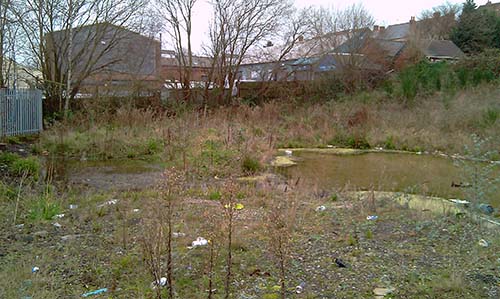 Looking from Bird Street where the largest gas holder stood.
Looking from Bird Street where the largest gas holder stood.
The works was probably still producing gas into the 1960s,
and the holder was still in operation until the 1970s, although at what time gas production stopped is not known.
Many of the old gasworks buildings remain today, although the early Victorian and Edwardian buildings have gone,
some of the surviving buildings form part of the Musk Lane Trading Estate.
The crater from the last of the gas holders is situated off Bird Street, the site has now been cleared
and two new dwellings built in 2017.
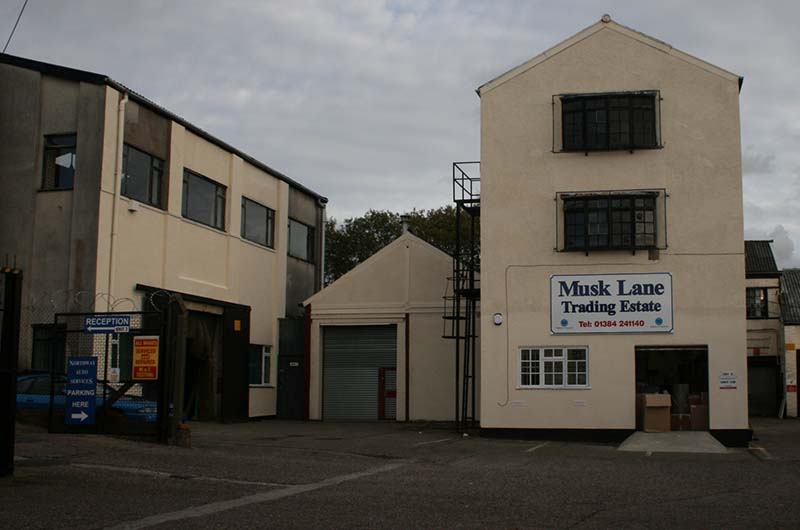 Looking across at the lost 'Gas Street' from the Musk Lane end. Looking across at the lost 'Gas Street' from the Musk Lane end.
Photo CDM 2015
The tall building was built in the 1950s, Gas Street would have hitherto passed through where the building now stands.
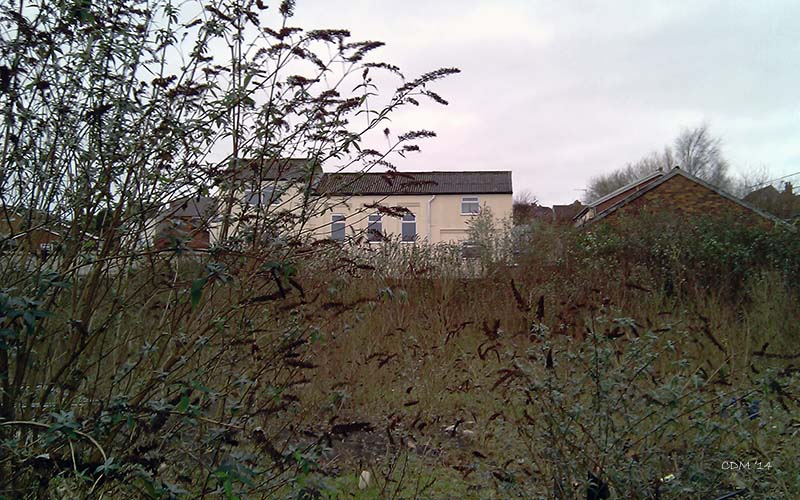 The site now partly reclaimed by nature, with the old works in the background. The site now partly reclaimed by nature, with the old works in the background.
Photo CDM 2015 ~
|
|
